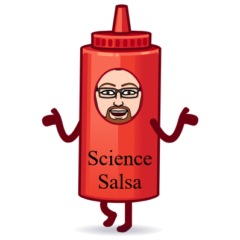How to become an excellent science communicator?
In science communication nothing beats the dual-package: carefully structured message combined to the ability to hear and read the audience. I am good at engaging the audience but I really want to become the kind of person that can do both engagement and structure effectively; and to keep it fresh, so we can have fun.
I tried the easy way; I searched online for a 5-minute-a-day method for science communication. Results guaranteed after the first two weeks, or your money back. I couldn’t find it.
Plan B is to find my own method for adding formal structure to my own voice. The first step on my method is to learn the craft of scientific writing. There are several things I am doing to make progress in that area: I am using a twitter account to learn to write a compelling message in 140 characters or less; I am taking Writing in The Sciences, an excellent Coursera class taught by Kristin Sainani at Stanford; and I am writing every day, some of those writings you will see in this blog in the future. I am mainly doing what I do best: learning by observing and by reading other people.
How have other people started as science writers?
I think the best start to answer the question is reading Ed Yong’s blog. Ed is a British science writer with a blog called “Not Exactly Rocket Science” . He is very active in the Science Online community and he compiled this great list of scientific writers –145 of them– telling you their personal path to get there; Ed said about this group of people, ”You can already see that they’re a varied bunch. Some stumbled into it by accident. Some came from traditional journalistic backgrounds. Others were bitten by a radioactive Carl Sagan. The more the stories accumulate, the better this diversity reveals itself.” The blog post is here: the origin of scientific writers.
I haven’t read all the names in the post. I prefer to read a new one when I have five minutes free, check their web page, maybe start following their blog or twitter account. You may want to do something similar to what I do; find stories that touch you personally, read the author’s work, and maybe contact them.
What path is Science Salsa following?
To properly answer that question, I think you may watch this half-an-hour video about journalism and starting your career by writing your own blog: Friends in low places – Video of Robert Krulwich. I really like his work on the radio, and RadioLab is one of my favorite shows. I think Krulwich makes a very good point in the video about the need to start gaining professional experience blogging from your own living room.
If you really want to know, the answer is simple: I am happily looking for friends in low places.
For more about the video: If you don’t have half an hour to watch it, I wrote another post with relevant parts of the transcript here.


Nice post, Science Salsa. I’d say if you want to start somewhere with science communication, start with the passion – and you seem to have that one sorted. Good luck – we really need more engaged and articulate ambassadors out there telling the great stories that make up the patchwork of scientific progress.